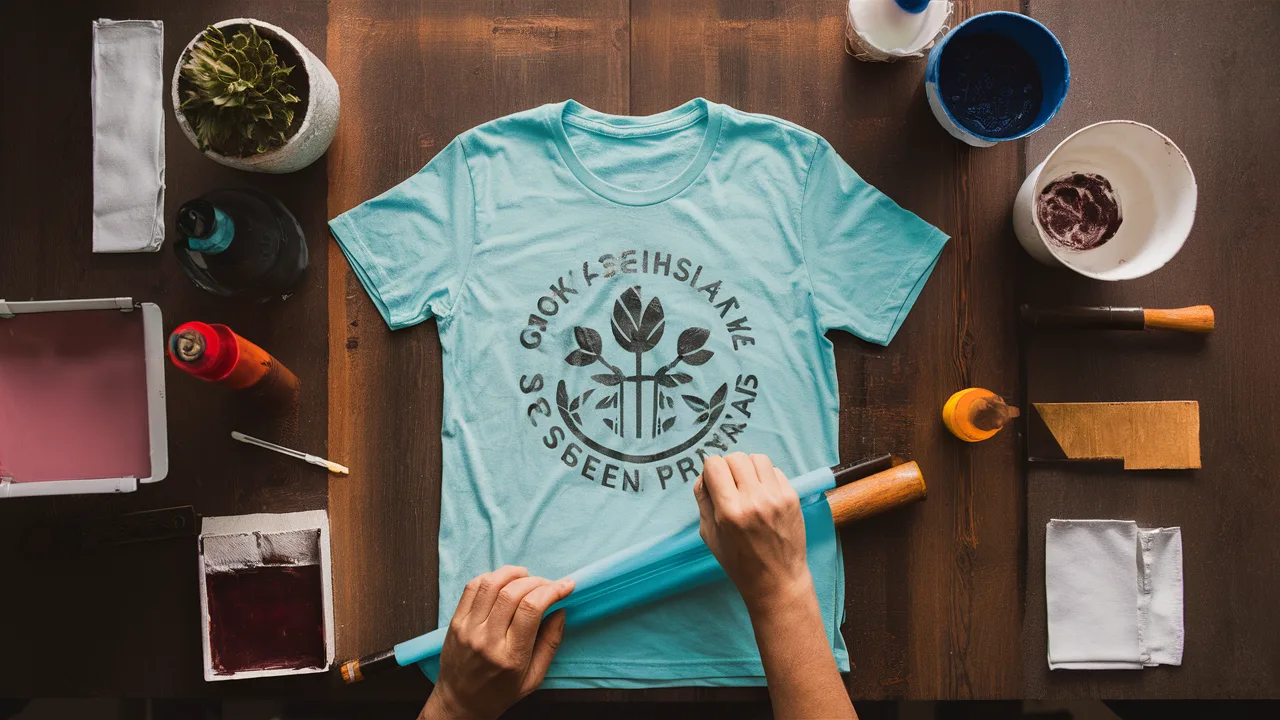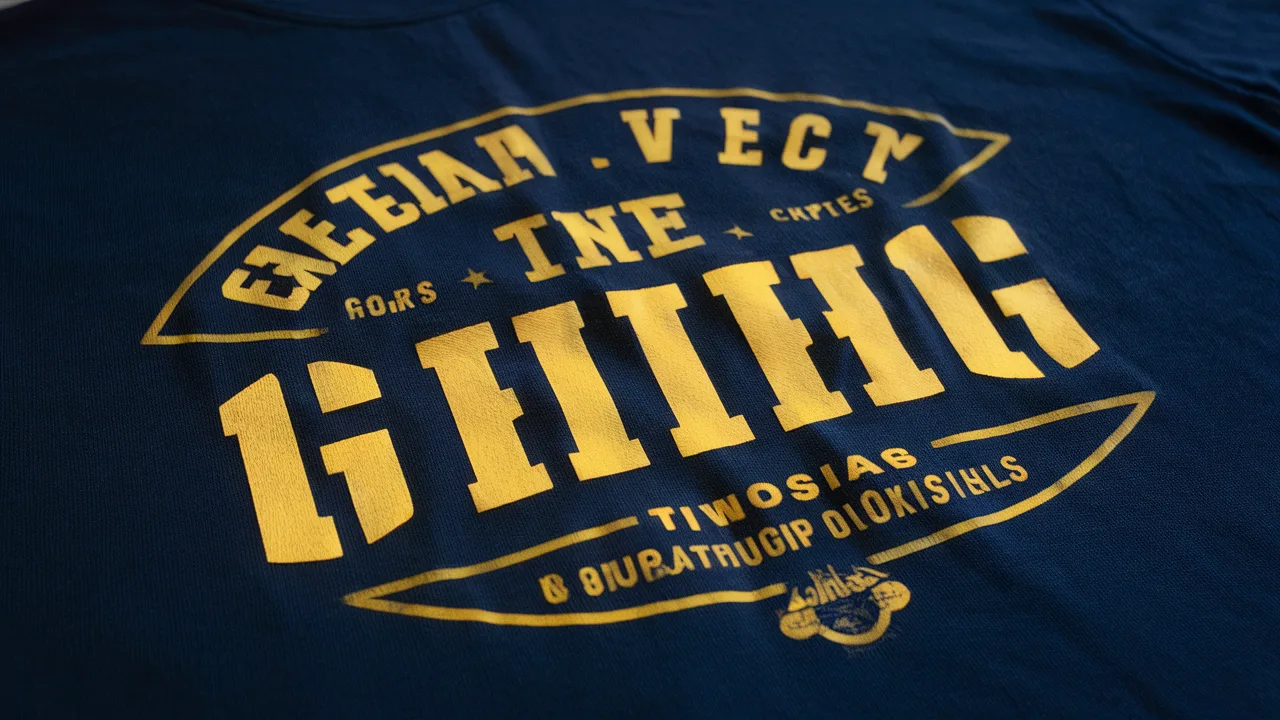What are the different types of screen printing inks, and which one is right for your project?
Screen printing inks come in a wide variety of types, each with its own unique benefits, textures, and use cases. The right ink depends on the fabric you’re printing on, your desired effect, durability requirements, and environmental considerations. From durable plastisol to soft-hand water-based ink, choosing wisely can be the difference between a vibrant, long-lasting print—and a faded disappointment.
TL;DR – Screen Printing Inks at a Glance
- Plastisol Ink: Durable, vibrant, ideal for beginners. Not breathable and needs heat curing.
- Water-Based Ink: Softer, eco-friendlier, soaks into fabric. May require more skill and longer drying times.
- Discharge Ink: Removes fabric dye for super-soft prints. Works best on 100% cotton dark garments.
- Specialty Inks: Includes puff, metallic, glow, and glitter options for custom effects.
- Best Choice: Varies based on design, fabric, texture preference, and environment considerations.
1. Understanding Plastisol Ink
Ever printed a T-shirt and noticed that rubbery, raised texture? That’s likely plastisol ink—the go-to standard in screen printing. It’s essentially liquid plastic (PVC-based) suspended in a plasticizer, and it doesn’t dry unless you cure it with heat—making it extremely user-friendly during production.
- Pros: Bright colors, highly opaque, long shelf life, easy to use.
- Cons: Less breathable, not eco-friendly, requires high-temperature curing (~320°F / 160°C).
This type of screen printing ink is perfect for printing on dark-colored garments, especially cotton or blends. If you’re just starting your screen printing project or running high-volume orders, plastisol is forgiving and delivers consistent quality every time.
2. Exploring Water-Based Inks

Softer Prints, Cleaner Planet
Water-based inks are beloved by eco-conscious printers and those who prioritize a softer, vintage feel. These screen printing inks soak directly into the fabric, rather than sitting on top like plastisol. This creates a print that feels like part of the fabric itself—especially after a couple of washes.
- Pros: Soft-hand finish, breathable, lower environmental impact, easier cleanup with water.
- Cons: Can dry in the screen, harder to print on dark garments, requires longer drying times or curing units.
Wondering when to choose water-based ink for your screen printing project? It shines when printing on light-colored cotton garments or when the comfort and breathability of the shirt are top priority—ideal for fashion-forward designs or eco-responsible projects.
3. Eco-Friendly Options: Discharge and Water-Based Plastisol
Trying to balance bold color with sustainability in your screen printing project? Let’s dive into discharge and hybrid formulas.
Discharge Ink: Print Soft on Dark Tees
Discharge ink works by removing (discharging) the dye in the shirt and replacing it with pigment. It’s a bit like bleaching, but in a controlled, color-infused way.
- Best Use: Dark 100% cotton garments where a soft-hand print is desired.
- Considerations: It doesn’t work as well on blends and gives unpredictable results on synthetic fibers.
Water-Based Plastisol Hybrids
These types of screen printing inks aim to give you the best of both worlds—soft feel with better performance on multiple fabrics. Some are designed to achieve water-based aesthetics with plastisol-like durability, while still maintaining eco-sensitivity with low or no PVC content.
4. Specialty Inks for Unique Effects

Adding Dimension and Dazzle
Want glow-in-the-dark apparel? Shirts that puff when heated or sparkle with glitter? Specialty screen printing inks make it all possible. These are where function meets flair in your screen printing project.
- Puff Inks: Expand with heat to create raised and textured designs.
- Metallic Inks: Reflective with silver, gold, or shimmery finishes, best for eye-catching designs.
- Glow Inks: Fluorescent capabilities activated by exposure to light.
- Foil Adhesives: Add shiny foil layers over printed adhesives for high-end effects.
Printing with specialty inks requires additional tools and expertise, but you’ll stand out—literally and figuratively. If you’re in the business of creating memorable merch or high-fashion prints, experimenting with these types is a must.
5. Choosing the Right Ink for Your Screen Printing Project
So, how do you choose the best ink for your screen printing project? Here’s what to consider:
| Need | Best Ink Type | Why |
|---|---|---|
| Beginner-Friendly | Plastisol | Doesn’t dry in screen, easy to store |
| Soft Feel | Water-Based or Discharge | Soaks into fabric |
| Eco-Friendliness | Water-Based | Low solvent usage |
| Dark Shirts | Plastisol or Discharge | High opacity and color retention |
| Special Effects | Specialty Inks | Metallics, puff, glow, foil |
Cost Guide: Screen Printing Ink Pricing in Singapore
| Ink Type | Low-End (SGD) | Mid-Range (SGD) | High-End (SGD) |
|---|---|---|---|
| Plastisol Ink | $10/L | $18/L | $30+/L |
| Water-Based Ink | $12/L | $20/L | $35+/L |
| Discharge Ink | $15/L | $25/L | $40+/L |
| Specialty Inks | $20/L | $35/L | $60+/L |
Frequently Asked Questions
What is the difference between plastisol and water-based ink?
Plastisol sits on top of the fabric, offering vibrant colors and durability. Water-based ink penetrates the fibers, giving a softer feel but needing more curing attention.
Can I use discharge ink on polyester shirts?
Discharge ink works best on 100% cotton. Synthetic fibers like polyester don’t react well, resulting in weak or uneven prints.
Which ink is most eco-friendly?
Water-based inks are generally considered the most eco-friendly due to their low VOCs and easier cleanup compared to plastisol.
Are specialty inks difficult to use?
They often require specific equipment and techniques (like foil heat pressing or accurate heat control). Beginners might prefer to start with standard inks before experimenting.
Can I mix ink types in one design?
Yes, but plan carefully. Mixing plastisol and specialty inks is common. However, don’t mix water-based and plastisol directly without adjusting for differing curing needs.
What ink lasts longest in prints?
Plastisol ink tends to have the longest lifespan due to its thick, durable surface layer. Water-based inks may soften over time, especially with frequent washing.
Final Thoughts
Whether you’re printing crisp logos on athletic tees or trying to bring streetwear-inspired art to life, your choice of screen printing ink is foundational. Understanding the characteristics and best use cases for plastisol, water-based, discharge, and specialty inks helps you confidently map out your screen printing project process. Don’t be afraid to experiment with different types of screen printing inks. As any seasoned t-shirt printer in Singapore will tell you, half the magic in screen printing lies in curiosity and iteration.
